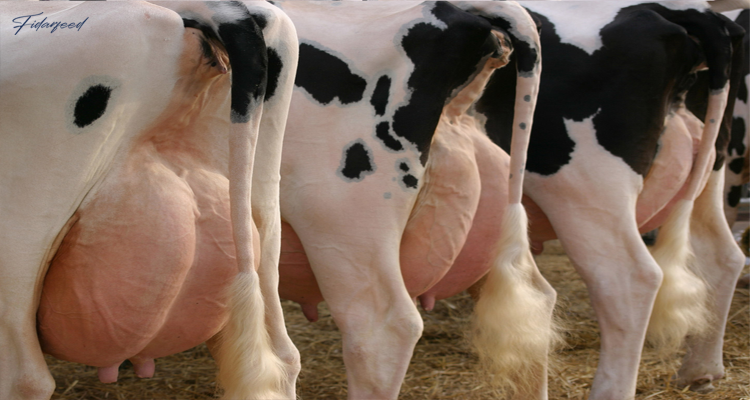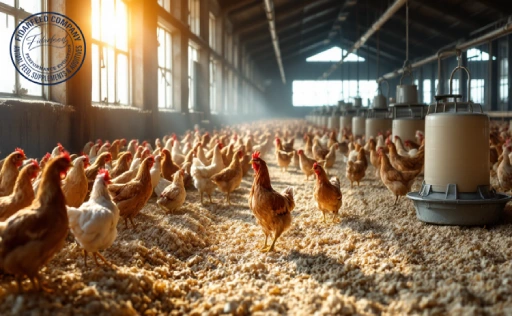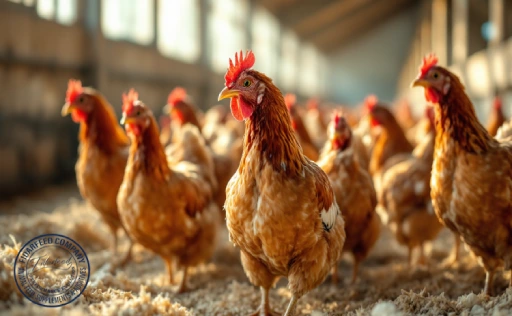How Environmental Stress Affects Milk Production in Cows is not just a scientific question — it’s a very real challenge for breeders and everyone involved in the cow feed and dairy industry. You care about your herd’s health, productivity, and welfare. You’ve invested time, money, and effort into feeding them properly, but sometimes the milk yield drops, and you can’t figure out why. Often, the reason hides in plain sight: environmental stress.
In this article, we’ll explain what environmental stress really means, how it affects milk production on a biological level, and what you can do — starting today — to minimize its impact. We’ll also share real-world examples that show how managing stress can transform your herd’s productivity. Read on to discover actionable advice and proven practices that can make a real difference in your farm and your cows’ lives.
What Is Environmental Stress in Cows and Why Should Breeders Care?
Environmental stress in cows refers to any external condition that disrupts their comfort, health, or normal behavior — leading to physical and mental strain. Just like humans, cows react negatively to uncomfortable situations. When their environment becomes too hot, too cold, too noisy, overcrowded, or dirty, they experience stress.
Learn more about: Probiotic Supplement for Livestock
Why should you care? Because stress is more than a nuisance — it can cost you money and harm your cows. Research shows that stressed cows eat less, produce less milk, fall sick more often, and even struggle with reproduction. In short, stress lowers milk yield, reduces the quality of milk, and jeopardizes herd health — things no breeder wants to see.
How Environmental Stress Affects Milk Production in Cows: The Science Explained
When a cow is exposed to stress — say, during a heatwave — her body activates its defense mechanisms. Hormones like cortisol and adrenaline surge to help her cope. Unfortunately, this “fight-or-flight” response diverts energy away from milk production toward survival.
For example, during heat stress, cows breathe faster and sweat more to cool down, but these processes burn energy that would otherwise go into making milk. Blood flow shifts to the skin instead of the udder, lowering milk output. Likewise, if she’s shivering in a cold barn, her body uses feed energy to stay warm rather than produce milk.
Learn more about: Do Happy Cows Make Better Milk? The Definitive Guide to Dairy Welfare
Behaviorally, stressed cows may spend less time lying down and ruminating — both of which are crucial for digestion and milk synthesis. A cow that’s constantly disturbed, overcrowded, or frightened eats less and rests less, and over time her productivity drops significantly.
Common Sources of Environmental Stress That Lower Milk Yield
Understanding the specific stressors on your farm helps you address them effectively. Below are the most common culprits:
-
Heat stress: Temperatures above 25°C (77°F), especially with high humidity, can reduce feed intake and milk yield drastically.
-
Cold stress: Prolonged exposure to freezing temperatures without adequate shelter or bedding forces cows to use energy to keep warm.
-
Overcrowding: Too many animals in too small a space leads to competition for food, water, and lying areas, causing frustration and lower milk production.
-
Noise and handling: Loud machinery, shouting, rough handling, and constant disturbances make cows anxious.
-
Poor housing: Dirty, damp, poorly ventilated barns contribute to discomfort and disease, adding more stress.
-
Transport and sudden changes: Moving cows to unfamiliar environments or switching routines abruptly can unsettle them and hurt production.
Learn more about: Signs of Stress in Cows: A Practical Guide for Farmers
Each of these factors on its own can be harmful — together, they can devastate herd productivity if left unchecked.
Signs of Environmental Stress in Dairy Cows Every Breeder Should Watch For
Being able to recognize the early signs of stress is key to taking timely action. Keep an eye out for these warning signs:
-
Reduced feed intake: Stressed cows often eat less, leading to weight loss and less milk.
-
Restlessness: Standing too much, frequent shifting, or aggression toward other cows.
-
Drop in milk yield or quality: Noticeable decrease in daily production or changes in fat and protein content.
-
Panting or excessive sweating: A clear indicator of heat stress.
-
Shivering or huddling: Signs of cold stress.
-
Increased illness: Stressed animals are more vulnerable to mastitis, lameness, and other diseases.
Learn more about: Probiotics for Poultry Farming: Boost Gut Health & Performance
The sooner you detect these behaviors, the better your chances of correcting the situation before major losses occur.
How to Reduce Environmental Stress and Improve Milk Production in Your Herd
Thankfully, there’s a lot you can do to make your cows’ environment more comfortable — and more productive. Here are some proven strategies:
-
Provide proper ventilation and cooling: Install fans, sprinklers, or shade to keep barns cool in summer.
-
Improve bedding and shelter: Clean, dry, and soft bedding helps cows rest and stay warm in winter.
-
Avoid overcrowding: Ensure each cow has enough space to lie down, eat, and move around comfortably.
-
Minimize noise and rough handling: Handle animals gently and keep machinery noise as low as possible.
-
Ensure consistent routines: Cows thrive on predictability — feed, milk, and handle them at regular times.
-
Access to clean water and balanced feed: Essential for resilience against stress and maintaining milk yield.
Learn more about: Happy Cows, Healthy Milk: The Power of Balanced Nutrition
Even small changes — like adding more fans or adjusting feeding schedules during heat waves — can make a noticeable difference.
Success Stories: How Breeders Have Boosted Milk Production by Managing Stress
One breeder shared how installing a simple misting system during summer reduced heat stress so effectively that his herd’s average milk yield rose by 15%. Another noticed that by providing more bedding and reducing overcrowding during winter, he cut illnesses in half and improved overall productivity.
Learn more about: Exploring the Key Benefits of Silage for Cow Calf Growth in Modern Farming
Scientific studies back these stories. Research published in Journal of Dairy Science shows that cows in well-ventilated, comfortable barns produced significantly more milk than those in poorly managed environments. These examples prove that managing stress isn’t just good for animal welfare — it’s good for business too.
Final Thoughts: Why Managing Stress Is Key to Healthy, Productive Cows
Environmental stress is an invisible thief that quietly robs you of milk, profits, and animal health. But with awareness, observation, and a few smart changes, you can take control. Healthy, comfortable cows reward you with higher milk yields, fewer illnesses, and better overall herd performance.
Investing in your cows’ environment pays dividends — emotionally, because you know you’re caring for your animals, and financially, because a calm herd is a productive herd.
If you’ve experienced challenges — or successes — in managing environmental stress on your farm, we’d love to hear from you. Feel free to leave a comment, ask questions, or share your thoughts below. Together, we can create healthier, happier, and more productive herds.









